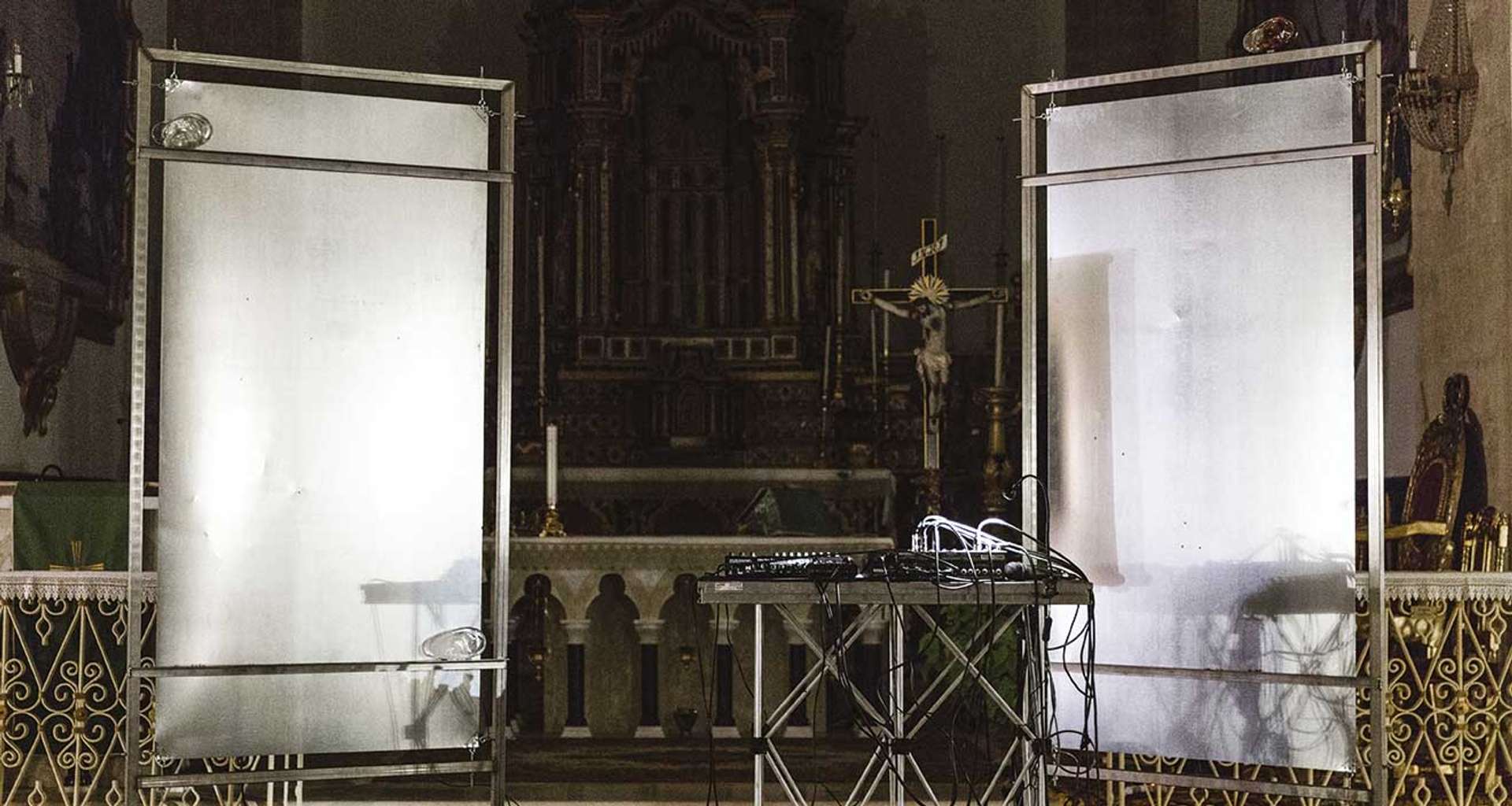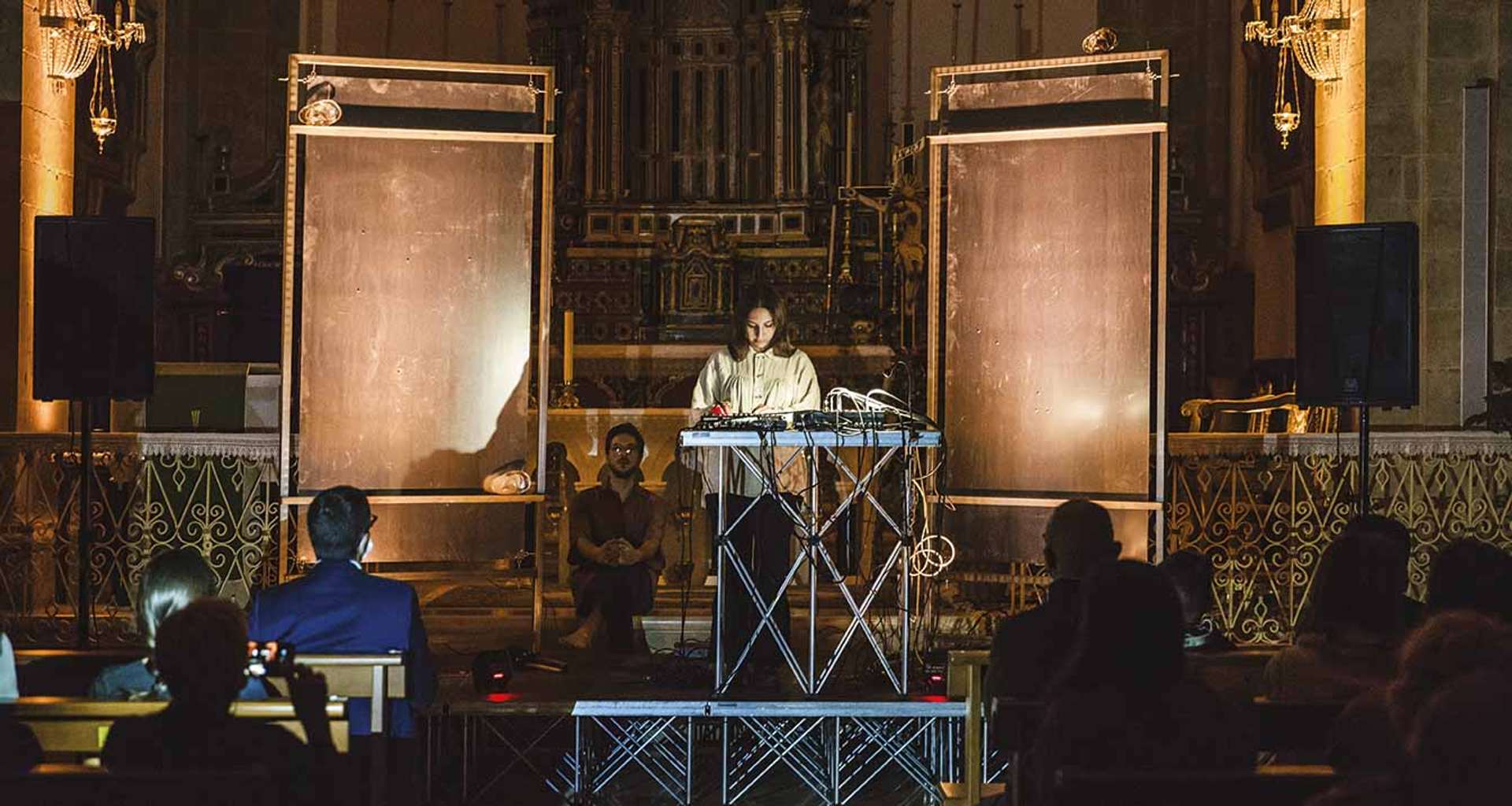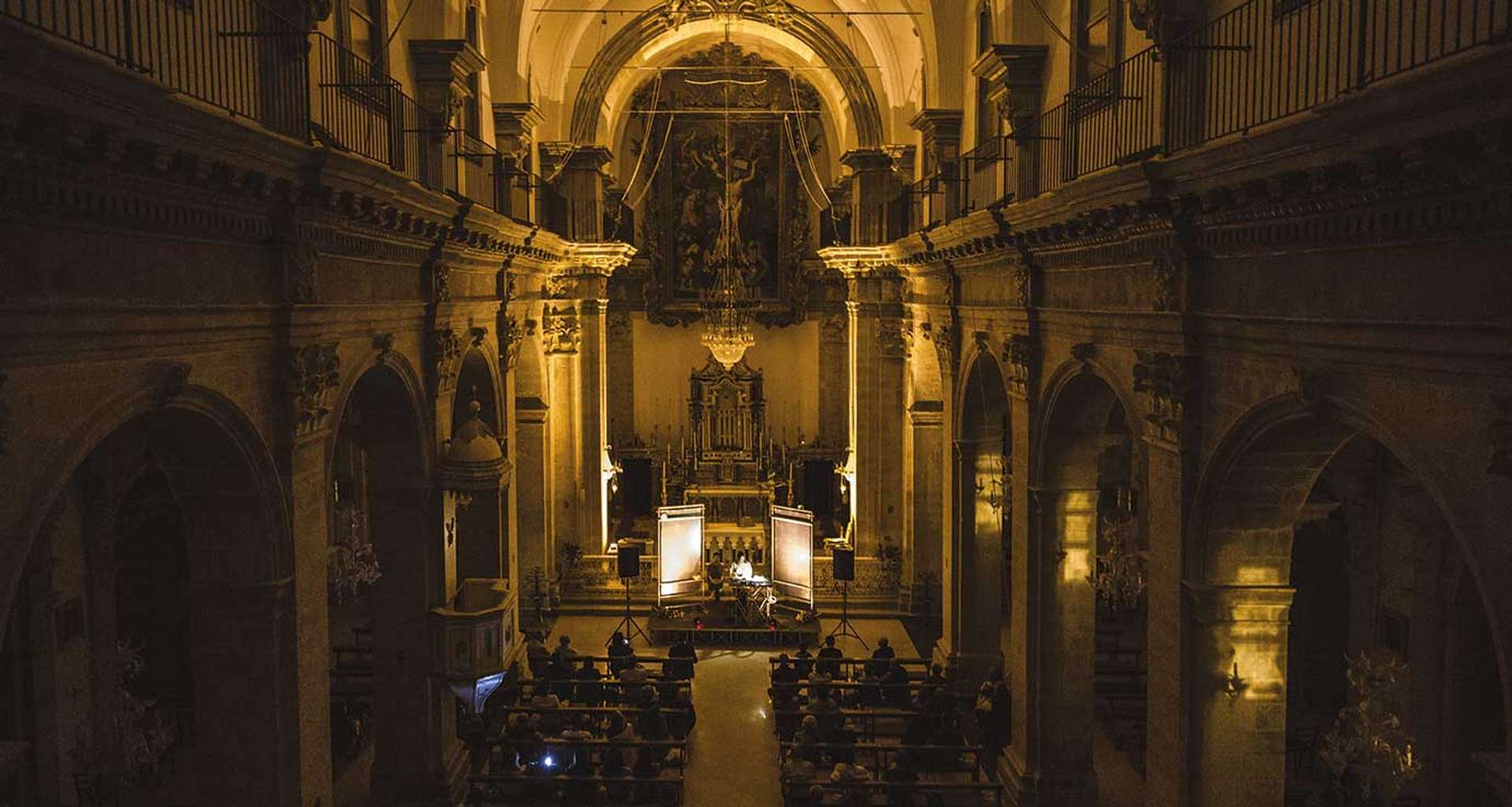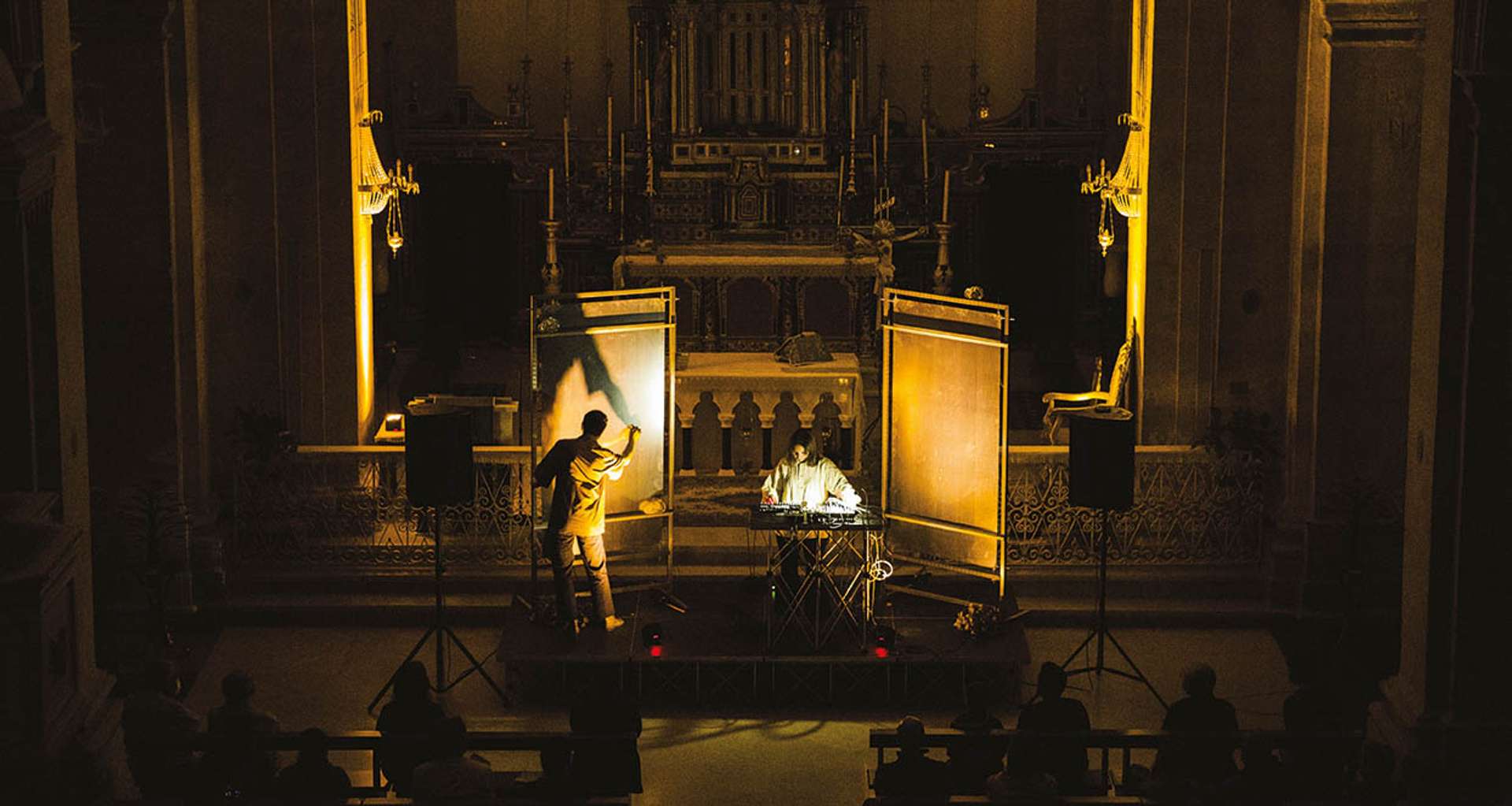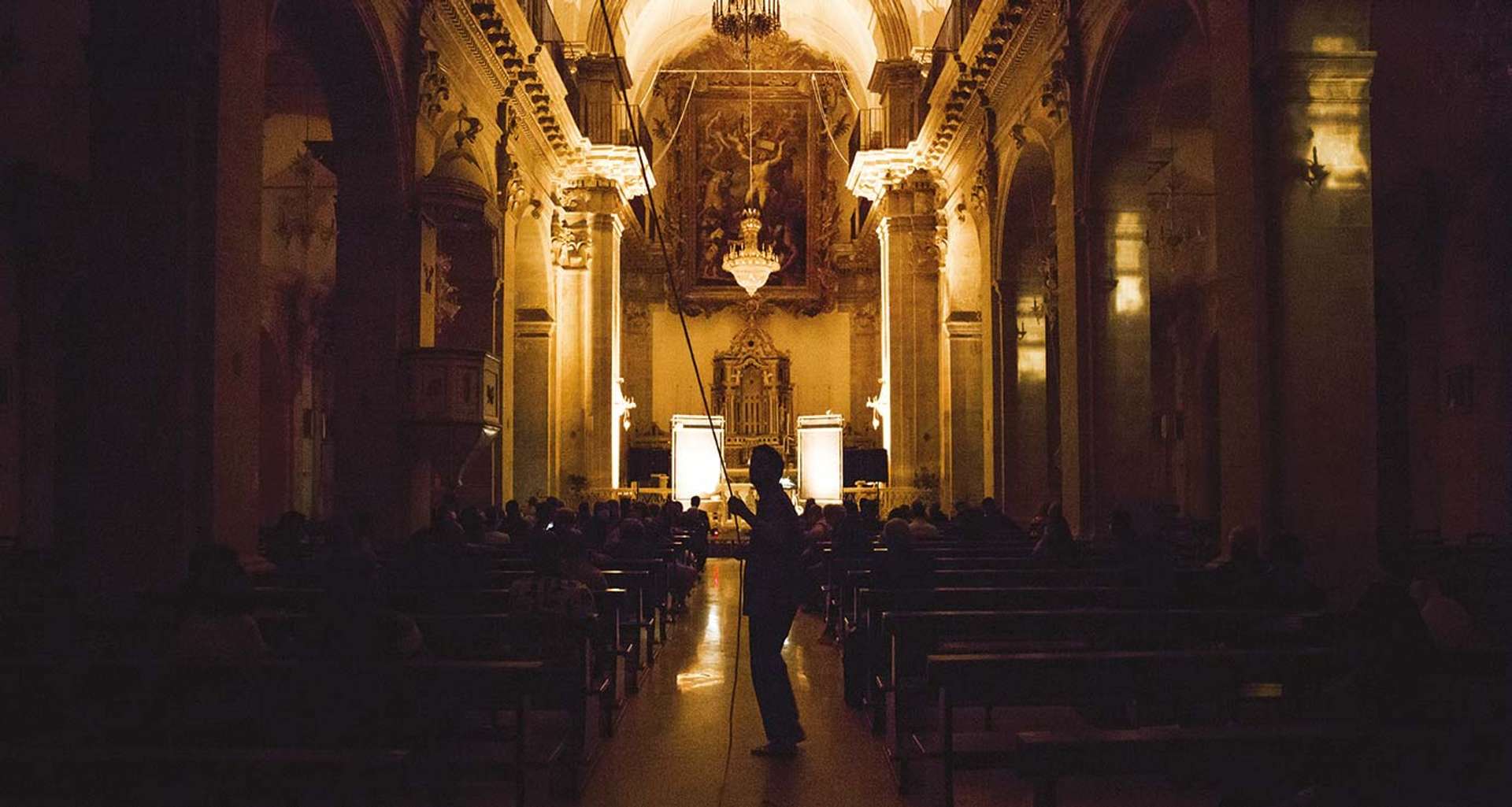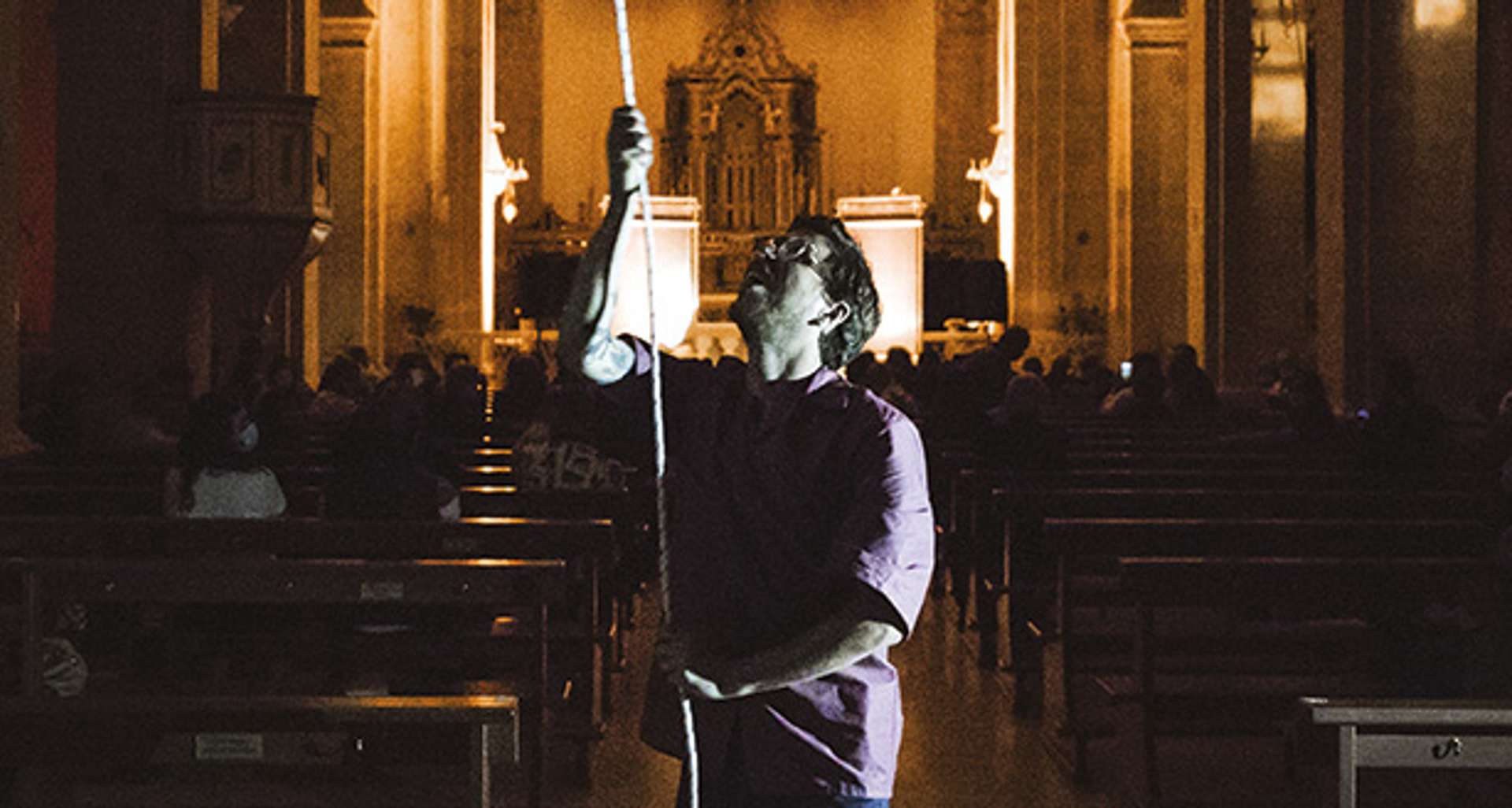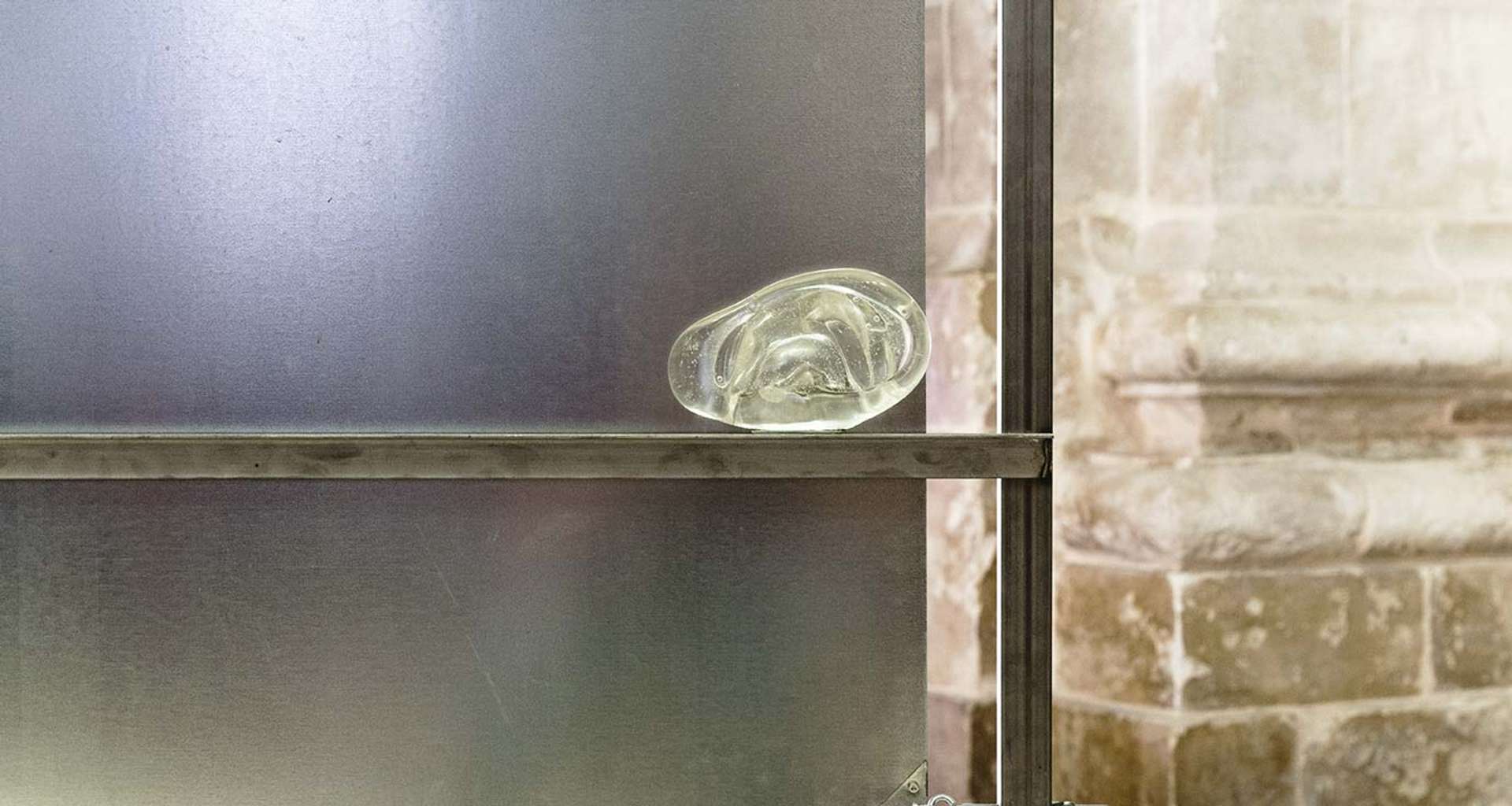Theirs is a project that reflects on the relationship between collective and individual memory through the significance and monumental value of bells.
For a long time, the sound of bells has had the societal task of regulating the habits of local communities, symbolically imprinting itself on the collective imagination. After the two world wars, bells were forged in Europe to celebrate peace. With no small irony, it was precisely the cannons of armies that were reused as a resource for the bronze, making the monumental bell an interesting crossroads of meanings. Glaring Sounds is a performance, consisting of an installation and a musical score developed from audio recordings of war bells. Using analog reverberations and tape loops, the work invites the audience to confront a chasing melody, which is never completed. The composition activates a mnemonic mechanism: the sounds spread through space addressing individuals and the community. Since 2019 Filippo Vogliazzo and Marta De Pascalis have been working on the mechanisms of memory generated by sound, and on music as a key to access deep memories. Sound is a bridge between what is real and what is not: while being completely ethereal, just like memories, it influences our perception of ourselves and our surroundings.
"GLARING SOUNDS" INVOKES A MOMENT OF COLLECTIVE TUNING, DESIGNED TO REFLECT ON HOW MEMORY AND SOUND VIBRATE THROUGH US, TIME AND SPACE
Marta De Pascalis (Rome, 1987) is a musician and sound designer. Over the years her interest has focused on electronic music, covering multiple sound territories in her research.
Filippo Vogliazzo (Milan, 1987) is a visual artist. His research focuses on the role of objects as essential components of our environment, and how they can influence our perception of ourselves. With an interdisciplinary practice that ranges from investigations of materials, symbols and architectural forms to questions of a poetic nature, he seeks to examine established norms, behavioral patterns, and the constitution of social spaces.
SOUND IS A BRIDGE BETWEEN WHAT IS REAL AND WHAT IS NOT: WHILE BEING COMPLETELY ETHEREAL, JUST LIKE MEMORIES, IT INFLUENCES OUR PERCEPTION OF OURSELVES AND OUR SURROUNDINGS
Ferla is a small town in the Val di Noto rebuilt after the 1693 earthquake that razed most of eastern Sicily to the ground. It is so that this part of the island, rebuilt in the exuberant forms of Baroque, has become an atlas of architecture of such value as to deserve the title of UNESCO World Heritage Site. The subsoil and the caves of Ferla are also rich of testimonies of the civilizations that have inhabited it during the centuries – Byzantines, Longobards, Normans and maybe Arabs. From the intricate system of cave-dwellings, alleys and small streets was born the Norman village, then destroyed by the earthquake. The eighteenth-century cross-shaped urban layout that has remained until today is dotted with churches, arranged along the path of the “via sacra” in an uninterrupted Baroque setting, in turn surrounded by the panorama of olive trees, carob trees, almond trees, vineyards and dry stone walls of the Iblean countryside. The cultural and environmental heritage of the village has received due recognition with its inclusion among “the most beautiful villages in Italy”.
